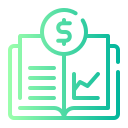Mastering Effective Bill Payment Techniques
Chosen theme: Effective Bill Payment Techniques. Welcome to your calm, organized financial life, where due dates stop shouting and your credit score takes a deep, happy breath. Dive in for practical strategies, real stories, and simple steps you can start today. Subscribe for weekly tools and encouragement.

Map Your Money: Know Every Due Date

Pull each bill and highlight four items: amount due, due date, grace period, and any promotional expirations. Melissa once noticed a tiny footnote revealing her promo APR ending next cycle; one timely payoff saved her $96 in interest. Those small footnotes can be loud warnings.
Automation with a Safety Net
Autopay Minimums, Strategize the Rest
Set autopay for at least the minimum on credit cards and fixed bills to dodge late fees. Then make targeted manual payments to reduce principal and interest strategically. This split approach keeps you safe while preserving control over your payoff plan.
Stack Redundant Reminders
Create two alarms per bill: one week before and two days before. Pair a digital calendar alert with a physical cue, like a bright sticky note on your laptop. Ahmed avoided a late fee during a long trip because his calendar pinged while boarding.
Use a Dedicated Bill-Pay Account
Open a separate checking account solely for bills and maintain a one-month buffer. Automate transfers on payday, and let autopay draw from this account. Segregating funds reduces overdrafts, clarifies spending, and creates a psychological boundary that protects your essentials.
Prioritize When Cash Is Tight
Pay housing, utilities, transportation, and insurance before anything else. A single missed rent or lapsed insurance can trigger larger, faster consequences. Credit card late marks usually report at 30 days late, so pay something immediately and aim to resolve before reporting.
Tools That Keep You Honest
The 15-Minute Monthly Reconciliation
Once a month, compare your bill calendar to bank transactions. Check that every scheduled payment cleared, match amounts, and flag any discrepancies. This quick ritual catches double charges, missed autopays, and subscription creep before it drains your momentum.
Consolidate with Bank Bill Pay
Use your bank’s bill pay to schedule multiple payees from one screen. Set payments to arrive two business days before due dates. Keep addresses and account numbers up to date; a ten-minute review each quarter prevents misfires and mailed checks gone astray.
Track Trends to Predict Spikes
Log monthly totals for utilities, telecom, and insurance. Seasonal patterns emerge quickly—winter heating, summer electricity. Budget a small sinking fund for expected spikes and smooth your cash flow. You’ll feel prepared instead of surprised when the thermostat demands more.

Build a Cushion and Breathe
Get One Month Ahead, Step by Step
Aim to pay this month’s bills with last month’s income. Start by moving one bill earlier each cycle until a full month is covered. Celebrate milestones—a single bill one month ahead counts. Momentum builds faster than you expect when progress feels visible.
Sinking Funds for Irregular Bills
Divide annual or semiannual costs—like insurance, car registration, or memberships—into monthly transfers. Keep separate labeled savings buckets for each. When renewal hits, you’ll pay calmly. I once avoided a $125 surprise by preloading a small fund for car insurance renewal.
Emergency Protocol After a Miss
If you miss a payment, act the same day: pay what you can, call to request a courtesy fee reversal, and ask whether they can avoid reporting if under 30 days late. Then adjust your calendar and automation to prevent a repeat.
